Fantastic Schools and How We Find Them
Magic schools. The very words fill us with a kind of joy. It takes something we all have in our experience in one form or another—school—and mixes it with something strange and wondrous—magic.
The general public has heard of one magic school, or perhaps, two. However there are actually dozens, or hundreds, of series involving some sort of magic mixed with schooling, whether it is students attending school to become a magician, a witch, a sorcerer, a superhero, etc. or attending a school with ordinary subjects but soon discovering that the place is peopled with vampires, werewolves, angels, etc.
In general, these magical institutions of learning come in one of several types. This article is a look at the most common types of magic schools.
Roke—the first magic school!: In her seminal series, A Wizard of Earthsea, Ursula LeGuin introduced the concept of a magic school—a school where students went to learn good magic (or at least magic that could be used for good.) Her magic school was called Roke. It could only be entered if you gave your true name to the Master Doorkeeper, and, to depart as a master yourself, you had to be able to tell him his name. Inside Roke were wonders like the naming tower and the pattern grove, and the teachers had names like Master Chanter, Windkey, and Master Hand.
Roke was not the modern boarding school we see so often in magic school books today. It had was more like a cross between the Medieval University and a temple for training young Buddhist or Taoist monks. It was an exotic place of hush and knowledge.
So far as I know, even though Wizard of Earthsea was extremely popular in the 1970s and 80s (every fantasy fan of that period had read Tolkien, Lewis, and LeGuin), I am not aware of any other stories that copy the Rokean mold. Though Garth Nix wrote a series that caught some of the mood of the world of Earthsea itself.
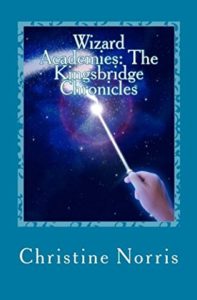 British Boarding Schools: The most famous magic school is built on the British boarding school model—though many American fans of Harry Potter do not realize that Rowling is describing a typical British school and that she did not make up the whole thing from scratch.
British Boarding Schools: The most famous magic school is built on the British boarding school model—though many American fans of Harry Potter do not realize that Rowling is describing a typical British school and that she did not make up the whole thing from scratch.
The British school model calls upon students to police each other. To this end, there are prefects, head boys and girls, houses that compete against each others, scholastically and in sports, and other traditions arranged to punish or reward an entire group. This is thought to encourage the students to keep each other from getting out of hand, as they will all be punished. Older students are tasked with keeping younger students in line and have quite some leeway with how harsh they can be. Teachers have a great deal of leeway with how biased they can be.
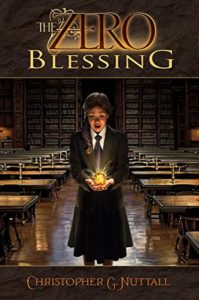 I recall when Harry Potter was first becoming a phenomena that some Americans found Snape’s treatment of Harry unrealistic. In most American schools, teachers could not get away with such obvious favoritism of one student and mistreatment of another. But if you read stories of real British boarding schools, such as the childhood experiences of C. S. Lewis—whose headmaster had literally lost his mind, but no adult had noticed—you see that Snape’s behavior was not particular unusual by British boarding school standards.
I recall when Harry Potter was first becoming a phenomena that some Americans found Snape’s treatment of Harry unrealistic. In most American schools, teachers could not get away with such obvious favoritism of one student and mistreatment of another. But if you read stories of real British boarding schools, such as the childhood experiences of C. S. Lewis—whose headmaster had literally lost his mind, but no adult had noticed—you see that Snape’s behavior was not particular unusual by British boarding school standards.
Books in this group include Christopher G. Nuttall’s The Zero Blessing, and his Schooled in Magic, The Worst Witch, and Christine Norris’s The Kingsbridge Chronicles, and of course, Harry Potter. (Information on additional schools in the Hogwarts universe can be found at HarryPotter.wikia.)
American Boarding Schools: Many current series about magic schools—particularly those involving vampires—follow the American boarding school model. This model lacks the institutionalized bullying that the British schools offer, where upperclassman are granted established powers over underclassmen. What a student gains from not being under the power of their elders, they loses in location—as these schools all seem to be in remote locations that lend them an almost prison like feeling. (Christopher G. Nuttall, in his article on the evils of boarding school, mentioned that this could be true in British boarding schools as well. However, I have not often seen this as an issue in novels set at British magic boarding schools.) This, of course, makes matters all the worse when the teachers all turn out to be vampires.
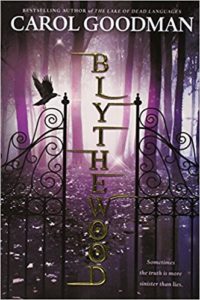 The brand of American magic school referred to above is much like a Gothic. In a Gothic, a young woman is put into a situation where she lives removed from normal society—usually on a windswept moor or an island in the Hebrides or something equally remote. She has few or no friends to turn to, and no place to run. Strange and unnerving things happen around her, and she has to solve the mystery of what is occurring, despite her fairly helpless state, while figuring out how to stay alive.
The brand of American magic school referred to above is much like a Gothic. In a Gothic, a young woman is put into a situation where she lives removed from normal society—usually on a windswept moor or an island in the Hebrides or something equally remote. She has few or no friends to turn to, and no place to run. Strange and unnerving things happen around her, and she has to solve the mystery of what is occurring, despite her fairly helpless state, while figuring out how to stay alive.
This model of story is popular in a certain class of American magic school books. The main character, almost universally a girl arrives at the school, often without knowing that there is anything supernatural going on, and slowly discovering that she is in a situation far more dangerous than she expected.
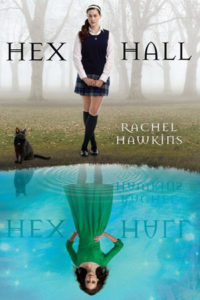 Interestingly, there do not seem to be as many magic school books that take place at the ambiguous American public schools. Perhaps, this is because magic school books usually take place in worlds where magic is hidden, and it is hard to hide things that are taught at schools that are open to the public. I did read one book where the girl was falsely accused of a crime and sent away to reform school, where the school had a public school feel, even though it was actually a boarding school attended by fallen angels (and a few unfallen ones.) For the most part, however, magic schools seem to be places where students board.
Interestingly, there do not seem to be as many magic school books that take place at the ambiguous American public schools. Perhaps, this is because magic school books usually take place in worlds where magic is hidden, and it is hard to hide things that are taught at schools that are open to the public. I did read one book where the girl was falsely accused of a crime and sent away to reform school, where the school had a public school feel, even though it was actually a boarding school attended by fallen angels (and a few unfallen ones.) For the most part, however, magic schools seem to be places where students board.
This type of magic school is very common. Blythwood by Carol Goodman is my personal favorite in this genre. Others include A Great and Terrible Beauty (which might actually fall in the first category, but I put it here due to its Gothic feel.) Hex Hall, Vampire Academy (one could debate whether academies with vampires count as magic schools)
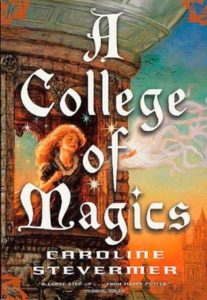 Universities: Universities also seem like they would be a natural setting for a magic school, but they, too, seem less common than the boarding school model. However, there are some. Caroline Stevermer, a favorite author of mine, wrote a book called A College of Magics about a girl who attends a magical college. She then went on to write other books about magical colleges as well. Mary Catelli also writes about a magical university in her A Diabolical Bargain. Rachel Caine’s vampire infested university in Glass Houses also comes to mind.
Universities: Universities also seem like they would be a natural setting for a magic school, but they, too, seem less common than the boarding school model. However, there are some. Caroline Stevermer, a favorite author of mine, wrote a book called A College of Magics about a girl who attends a magical college. She then went on to write other books about magical colleges as well. Mary Catelli also writes about a magical university in her A Diabolical Bargain. Rachel Caine’s vampire infested university in Glass Houses also comes to mind.
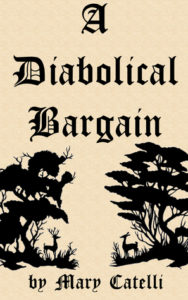 Apprenticeships: More traditional stories of magic often include apprenticeships, where a student is learning one on one, or perhaps, one of a few number of students learning from a single master. This method was very popular in the Middle Ages but has fallen out of favor in the West. However, before Harry Potter, this was the most common form of magical study in stories. Even today, in our Post-Harry world, such stories are still common.
Apprenticeships: More traditional stories of magic often include apprenticeships, where a student is learning one on one, or perhaps, one of a few number of students learning from a single master. This method was very popular in the Middle Ages but has fallen out of favor in the West. However, before Harry Potter, this was the most common form of magical study in stories. Even today, in our Post-Harry world, such stories are still common.
Homeschooling: Homeschooling is a bit like being an apprentice, as it does not take place in a traditional schooling environment. Also there are a small number of students and usually one or two teachers. There do not seem to be a great deal of series where the main character are homeschooled in magic, but the number may well grow in the coming years.
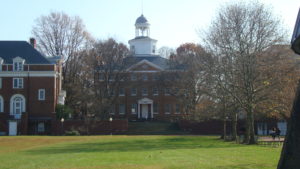
St. John’s college in Annapolis–started by students from Roanoke Academy’s Dee Hall.
The St. John’s College model: The last type of magic school is my own Roanoke Academy for the Sorcerous Arts that appears in the Books of Unexpected Enlightenment. Having noticed the trends I mention above, I wanted to design a magic school that did not follow the traditional boarding school model, either British or American. I also wanted it, like Hogwarts, to be the kind of place a reader would want to spend time,* rather than one of the more frightening Gothic schools that feel like a place one wishes to escape.
My own high school years, at public school, had been rather miserable. My college experience, however, had been joyful and full of learning. The college I attended, St. John’s College in Annapolis, Maryland, was quite an usual place with many quaint traditions and unusual ways of doing things. I felt St. John’s would make a great magic school.
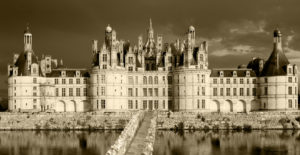
Roanoke Hall
So, I borrowed things from St. John’s: the classrooms where everyone sits around a central table, calling professors by the term “tutor” (also done in some places in Britain), don rags, reading from original works, core groups, and the entire athletics program. (Every time I steal something from SJC’s athletics program for Roanoke Academy, my editor flags it as unrealistic, including a note that says that no school would every actually do such a thing. )
I don’t know if anyone else will ever choose to adopt the St. John’s model for a magic school in the future, but I feel it has possibilities.
A few additional magic schools are listed here. What other models for magic schools have you seen? What models have you not seen that might make for good future magic school stories?
*
*–Christopher G. Nuttall pointed out to me that there is a danger in making boarding schools too appealing. Kids reading the stories start actually wanting to be sent to boarding school, rather like how fans of Harry Potter started wanting to own owls. Neither of these things are necessarily a good idea. I urge fans of the Books of Unexpected Enlightenment to stay at home until college…and then apply to St. John’s.

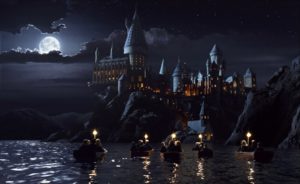
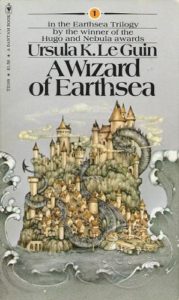
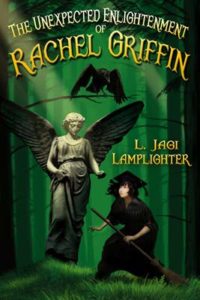
When you include the university models, many popular books come to mind that are not necessarily in series that focus on magic schools, but might only have one book in the series include a character’s years of schooling. Patrick Rothfuss’ first book comes to mind as do many of Mercedes Lackey’s books and Brian Weeks’ books.
The education system is often used as a key feature of the culture and world-building of a series.
Very true. I only touched on colleges a little bit. They deserve their own article.
Have you read the PS 238 webstrip? It’s more superpowers than magic, but the goddess Hestia makes an appearance as a student and one of the teachers is a witch.
I have read a bit of it, but not recently.
John’s running a game that is kind of based on My Hero Acedamia, but I am playing a witch much like the one from Little Witch Acedamia. All the superheroes don’t believe her when she says she’s a witch. 😉